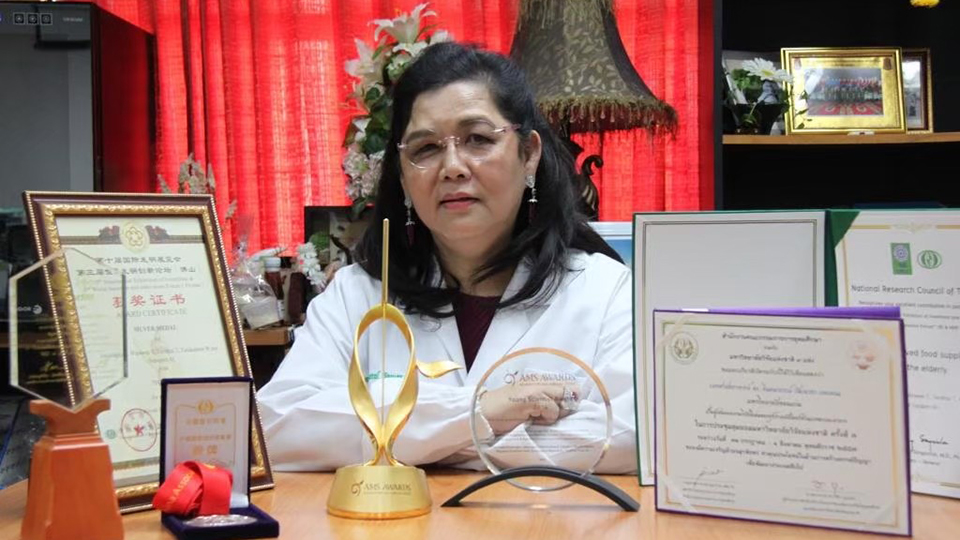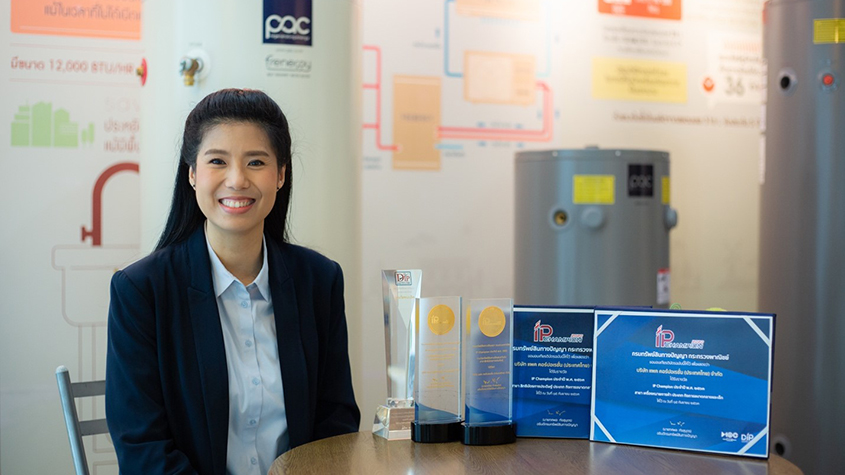Geographical Indications Tell Stories of People and Culture, Thailand Has Much to Offer
Geographical indications are signs used on products that have a specific geographical origin and whose qualities and reputation arise from that origin. GIs are about stories, stories of people, their culture, their knowledge, and their land. With 171 registered GIs and more to come, Thailand has developed a strong interest in that particular intellectual property right to help local communities benefit from the uniqueness of their products.
The Department of Intellectual Property of Thailand (DIP) organized a Regional Forum on Strengthening Brands, Designs, and Geographical Indications from 28 Nov-2 Dec 2022, in collaboration with WIPO. DIP invited some GI producers to introduce their products, including pepper, rice, mango, durian, and coffee.
“Chanthaburi Pepper”, Hot and Spicy

Catalogue, Department of Intellectual
Property of Thailand
The “Chanthaburi Pepper”’s distinctive taste is both spicy and pungent. It comes from two varieties namely; the Chanthaburi and Kuching varieties, which are planted and processed in ten districts of Chanthaburi province. Pepper, which is a perennial tropical vine, has been cultivated in the Chanthaburi province for several hundred years, and the area is still growing most of Thailand’s pepper. “Chanthaburi Pepper” became a geographical indication in 2020. Patthama Wongnopparat is the owner of Wongnopparat Pepper Farm and President of Pepper Mega Farm Community Enterprise, a farmers’ association grouping 33 farmers, growing pepper over 133 rai (21 hectares).

The soil and climatic conditions of the region give “Chanthaburi Pepper” its particular flavor, which is stronger and spicier than other peppers, she said. The granularity of the soil, mostly sandy loam, prevents flooding and protects the plants against diseases, she further explained. The topography of Chanthaburi, along with the soil characteristics, climate, temperature, and relative humidity, combined with ancestral cultivating methods, give “Chanthaburi Pepper” its unique qualities.
“Sa Kaeo Nam Dok Mai Mango”, Sweet and Fragrant

Intellectual Property of Thailand
“Sa Kaeo Nam Dok Mai Mango” has an oval shape, thin skin, yellow to golden color when it is ripe, low fiber content, and lean seeds. Although the raw fruit is sour, the ripe mango is sweet and fragrant. Those specific characteristics of the “Sa Kaeo Nam Dok Mai Mango” grown in the areas of Muang Sa Kaeo, Watthana Nakhon, Aranyaprathet, Khao Chakan, Wang Nam Yen, and Wang Somboon Districts of Sa Kaeo Province allowed the registration of a GI in 2018.

Prasroed Chuntrakun is the Vice-Chairman of the Sakaeo Mango Community, a group of 80 small farmers cultivating “Sa Kaeo Nam Dok Mai Mango”. According to Mr. Chuntrakun, this Thai mango has perfect density, and smooth texture, and has a higher sugar content than mangoes from other regions. The farmers produce about 8,000 tons of GI mango a year, over a cultivating surface of over 10,000 rai (1,600 hectares). The soil in Sakaeo province, a mix of clay and gravel allows the roots of the mango trees to absorb water and nutrients, and good oxygenation. The high level of nitrogen in the soil gives “Sa Kaeo Nam Dok Mai Mango” its sweetness.
The GI mangos are sold on the national market and exported to Europe, Japan, South Korea, China, and Hong Kong.
“Nakhon Nayok Giant Marian Plum”, Sweet meets Sour

Catalogue, Department of Intellectual
Property of Thailand
The “Nakhon Nayok Giant Marian Plum” includes several varieties: Toon Klao, Bangkhun Nont, Tha Dan, Chid Salika, Toon Thawai, and Chid Sa-nga. The large oval-shaped fruits, identified by the GI, have a unique orange-yellowish color, thick and crisp flesh, distinctive fragrance, and sour-sweet taste.
The plum has been cultivated in Nakhon Nayok province for a long time. The combination of sandy soil and climatic conditions, a mix of hot and cold temperatures gives the GI plum its characteristics.

Somchit Kaeokhun is a farmer and member of the Association of Giant Marian Plum-producing farmers (Maprang farmers association of Nakhon Nayok province) which includes 400 smallholder farmers. She is also a chairwoman of the OTOP (One Tambon One Product) network in the province. Ms. Kaeokhun sells “Nakhon Nayok Giant Marian Plum” in grocery stores in Thailand and exports them to Malaysia and China. The GI plums are ripe to sell in February, at which time she also opens her farm to customers for direct sales.
“Prachin Durian”, Mild and Sweet
“Prachin Durian” includes several indigenous varieties: Kan Yao, Mon Thong, Cha Nee, and Kradum Thong, and its cultivation spreads across five districts of the Prachin Buri province (Mueang Prachin Buri, Kabin Buri, Prachatakham, Si Mah Phot, and Na Di).

Registered in 2016 as a geographical indication, “Prachin Durian” is milder than Thai durians produced in other regions, with smaller seeds, and smoother flesh texture, according to Chutima Sonloy, a durian farmer. The spiky GI fruit’s color varies from brown to dark brown and its taste is sweet and creamy.
Ms. Sonloy started her family business in 2017. She grows “Parchin Durian” on 100 rai (16 hectares) and sells her products on the national market, as her production is not large enough yet to export. The harvesting season of GI durian runs from May to July, during which she encourages customers to come to her farm to pick their own fruits. She also launched her online e-commerce platform four years ago (through her Facebook page).

Recently planted durian trees take about five years to yield their first harvest, Ms. Sonloy explained, adding that the fruits are more flavorful as the trees grow older. She owns 20 oChutima Sonloy, a “Prachin Durian” producer is standing on a wooden deck, in a garden, and holding an empty box of her products, with the yellow Thai GI logo on itld durian trees, some of them over 60 years old. The GI fruits from those trees have a very distinctive taste and are pricier.
The Prachin Buri province is an alluvial plain with a minerals-laced sandy and soft rock soil, providing “Prachin Durian” its unique characteristics.
“Thoungsamrit Hom Mali Rice”, Long Aromatic Grain
“Thoungsamrit Hom Mali Rice” comes in paddy, brown and white rice, which are long grain and have a natural fragrance. It is grown during the rainy season and the nature of the croplands in Thoungsamrit, sitting on rock salt gives the jasmine rice a natural aromatic flavor. The rice is grown in 14 districts of the Nakhoh Rafchasima Province.

Intellectual Property of Thailand
Panchaya Buadsunthea represented the Phimai Agricultural Cooperative Ltd. The GI for the “Thoungsamrit Hom Mali Rice” was obtained in 2019. The cooperative includes ten groups of farmers, representing some 10,000 small farmers. When the weather conditions are favorable, the yearly production can reach 1,000 tons although Ms. Buadsunthea said severe weather could halve the harvest.
For the last 20 years, most of the harvest has been bought by Amway, a multi-level marketing United States company established in Thailand. Amway ensures the packaging and marketing of this Thai Hom Mali rice in the national market. The rest of the harvest is sold to hospitals and hotels.
“Dongmafai Coffee”: Naturally Low in Caffeine

“Dongmafai coffee” Arabica beans, beyond giving coffee its mellow taste and smoothness, have a very particular characteristic: they only contain 1 percent of caffeine.
Grown on the slope of the Eto Mountain Range, in the Khorat National Geopark, in the Nakhon Ratchasima Province, “Dongmafai Coffee” was registered as a GI in March 2016.
After a diversified career, from serving in the Royal Thai Air Force, to being an electronic technician, and later a flight attendant, Nopadol Moungkaew is now a community volunteer, a coffee farmer and producer. Some 15 years ago, he started planting coffee trees in the Khorat National Geopark. This Thai coffee, growing at a low altitude, between 400 and 700 meters above sea level, benefits from warmer temperatures so the fruit stays on the tree for a shorter term, Mr. Moungkaew explained. The shorter maturing time allows coffee cherries to develop more flavor and less caffeine.
Such a low caffeine content makes the product unique in Thailand and the world, according to Nopadol, without much competition but destined for a niche market, which is still new.

So far, 28 farmers are working with Mr. Moungkaew in a community association, and the coffee production covers an area of 300 rai (48 hectares). He created a coffee program through which he is trying to attract more farmers, and increase their skills. A trademark: Korat Thai Coffee was registered in 2011.
Farmers in the association use no chemicals and Mr. Moungkaew is hoping to get organic certification for the “Dongmafai Coffee”, which would make exports easier. He is also working on innovation, such as instant coffee pouches in Latte, Mocha, and Cappuccino versions, and coffee cubes, which are attracting many customers, he said. He hopes to attract more farmers and expand the cultivation area. At present, the coffee is available in local shops but Mr. Moungkaew expects to expand sales nationally and internationally. Another goal is to manage the water resource better so coffee trees can be watered while preserving the water coming from the hill and the rainforest.
Main Challenges for Thai GI Producers
Many GI producers are dependent on the weather and are affected by climate change. Too much rain and high humidity can damage the “Sa Kaeo Nam Dok Mai Mango” blooms and make the fruits prone to diseases.
Weather also conditions the harvest of the “Nakhon Nayok Giant Marian Plums”, as trees will not bloom if the temperature does not drop below 19°C. Farmers have realized that light will help the trees bloom so in case of unfavorable weather, they trick the trees with light bulbs. On the contrary, if the weather gets too cold “Prachin Durian” trees will not bloom.
Another challenge is competition from inside and outside the country. Competition from well-established GIs, such as Cambodia's “Kampot Pepper” is harsh, according to Ms. Wongnoppara, who added that over the years, pepper cultivation has decreased in the region to the advantage of other more lucrative crops, like durian. In turn, this has impacted the durian market and made it more competitive.
Among the challenges that Mr. Moungkaew is meeting is the reluctance of local farmers to engage in coffee growing, in part due to the climatic variations. Coffee trees start blooming in November, just before the dry season. Until the coffee cherries mature, in late spring, the trees need to be watered, which becomes a problem if the season is really dry, he said. In good years, the farmers can produce 1.5 tons of coffee beans, which drops to 600 kgs if the season is very dry.
He is hoping to receive help from the government in water supply management. With a reliable water supply, more farmers would plant coffee trees, he said. Another challenge is the need for awareness-raising about the quality and characteristics of “Dongmafai Coffee” for small shops so they can promote it.
GIs, Winning Customers’ Trust and Market Shares
Having their products registered as a geographical indication is raising hopes for producers of recognition of the quality and distinctiveness of their products with stricter production methods and control, translating into higher selling prices. GI registration brought other benefits to producers.
For example, the GI registration of “Chanthaburi Pepper” has allowed farmers to dispense with intermediaries as the GI boosted popularity.
The GI registration also opened new horizons for the Phimai Agricultural Cooperative now exploring options to directly export its “Thoungsamrit Hom Mali Rice”. Connections have already been established in Denmark and China, said Ms. Buadsunthea.
According to Mr. Moungkaew, the “Dongmafai Coffee” geographical indication is a magic tool. The GI shows where the coffee is coming from and guarantees its quality. It is very important to gain the trust of customers, so they can become regular customers, he said.
The GI requirements also set rules for the harvesting process and helped establish the roasting process and packaging in one place, reinforcing quality, he added.



